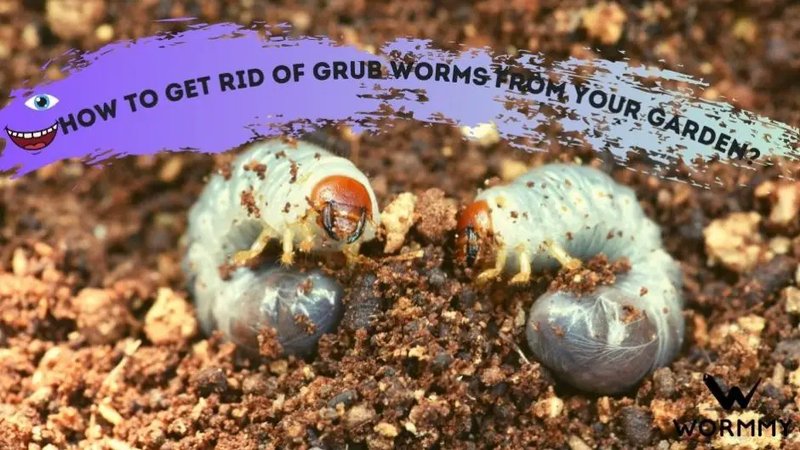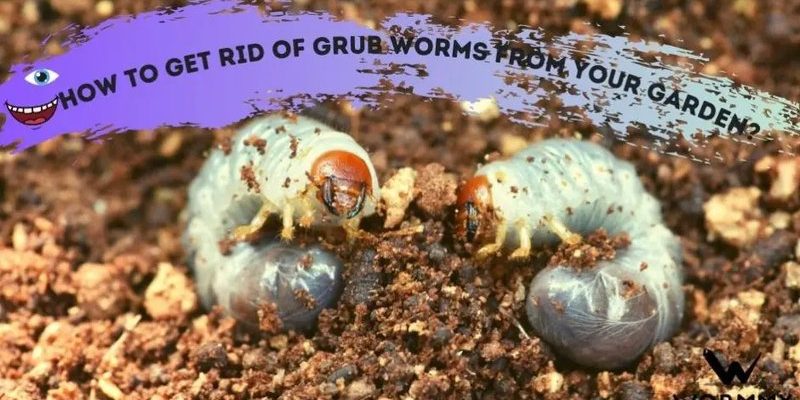
Grub worms are actually the larvae of beetles, and they thrive in soil, feeding on plant roots. You might be thinking, “Great, what now?” Don’t worry! In this guide, we’ll walk you through what grub worms are, how to identify them, and most importantly, what you can do to keep your garden healthy and happy. Let’s dig in!
Understanding Grub Worms: The Basics
Grub worms are a common problem for many gardeners, especially those using raised beds. They typically range in color from white to grayish and have a distinct C-shape. These little guys aren’t just your average worm; they can cause serious damage by feeding on the roots of your plants. This can lead to wilting, yellowing leaves, and ultimately, plant death.
Most grub worms emerge from eggs laid by adult beetles, often falling into the categories of Japanese beetles or June bugs. They thrive in moist, nutrient-rich soil, which is exactly what you have in your carefully tended raised beds. You might even notice them more in spring or late summer when they’re actively feeding. The real kicker is that infestations can happen quickly, so it’s vital to catch them early!
Besides being a nuisance, grub worms are a sign of an unhealthy garden ecosystem. A small infestation can lead to larger problems, so understanding how to tackle these critters is crucial for keeping your garden thriving.
Identifying Grub Worm Infestations
So, how do you know if you have grub worms in your garden? Well, there are a few telltale signs to look for. First, observe your plants. If they’re wilting or turning yellow, it could be more than just lack of water. Another indicator is seeing patches of dead grass or soil where nothing seems to be growing. These areas are often the result of grub worms munching away underground.
To confirm your suspicions, a quick soil check can be revealing. Gently dig around the base of your plants, and you might just unearth a few of these invaders. Look for white or light brown larvae—this is a clear sign of grub worms.
Also, keep an eye on local wildlife. Birds love to feast on grubs, so if you notice increased activity in your garden, it might be worth investigating. Remember, catching these pests early can save a lot of heartache later on!
Why Are Grub Worms Harmful?
You might be wondering, “What’s the big deal?” It’s just a worm, right? Well, here’s the thing: grub worms can significantly impact your garden’s health. As they feed on plant roots, they’re not just taking a snack; they’re actually undermining the plants’ abilities to absorb water and nutrients. This can lead to stunted growth, reduced yields, and even total plant collapse.
Think of your garden like a house. If the foundation is damaged, the entire structure is at risk. Grub worms compromise that foundation. Not only do they harm individual plants, but they can also attract other pests, like rodents and larger insects, who are drawn to the weakened plants. It’s like a snowball effect, where one problem leads to another.
Understanding the risks associated with grub worms helps you see why controlling these pests is essential to a thriving garden. The sooner you tackle the issue, the healthier your plants can grow!
Prevention: Keeping Grub Worms at Bay
Preventing grub worms is all about creating an environment that discourages them. Start by practicing good garden hygiene. This includes things like removing dead leaves, weeds, and any debris where beetles might lay their eggs. You might think of your garden as a clean slate—keeping it tidy makes it less inviting for pests.
Another effective strategy is to promote beneficial insects. Ladybugs and nematodes, for example, can help keep grub worm populations in check. You can introduce these friendly critters into your garden to create a natural balance. Also, consider crop rotation: changing what you plant each season can help reduce the chances of pests returning.
Lastly, regular inspections of your raised beds can make a world of difference. By keeping an eye out for any signs of grub worms or other pests, you can take action before they become a bigger problem. Preventative measures protect not just your plants, but also the enjoyment you get from gardening!
How to Control Grub Worms
If you’ve discovered grub worms have invaded your garden, don’t panic! There are several ways to manage these pests effectively. First, consider using natural methods. Removing them by hand can be surprisingly effective. If you dig up plants and spot grubs, just scoop them out and toss them away. It’s a bit like picking fruit—sometimes you just have to get your hands dirty!
Another option is to use organic treatments. Nematodes are microscopic worms that kill grub worms when introduced into the soil. They’re environmentally safe and won’t harm your plants, making them a popular choice among gardeners who want to keep things natural.
If things get out of hand, there are chemical solutions available as well. Just make sure to read labels carefully to avoid harming beneficial insects. Here’s a pro tip: apply these treatments in the evening when beneficial insects tend to be less active.
When to Seek Professional Help
In some cases, grub worm infestations can feel overwhelming, especially if your efforts don’t seem to make a difference. If your plants are still suffering despite your best efforts, it might be time to call in a professional. They can provide targeted treatments and advice specific to your garden’s needs.
You might consider this step if you notice significant damage across a large area or if you suspect more than just grub worms at play. Professionals can assess the situation and provide tailored recommendations. It’s a bit like having a trusted mechanic look under the hood of your car—it can save you a lot of time and frustration.
Don’t hesitate to reach out for help. Sometimes, having an expert’s eye can make all the difference.
Dealing with grub worms in raised garden beds can feel daunting, but with the right strategies, you can protect your plants and enjoy the fruits of your labor. From prevention and identification to control methods, being proactive is key. Remember to keep an eye on your garden’s health and act quickly whenever you notice signs of these pesky invaders.
By nurturing a balanced ecosystem in your garden and using both natural and professional approaches, you can ensure that your plants thrive, free from harmful pests. Happy gardening!

